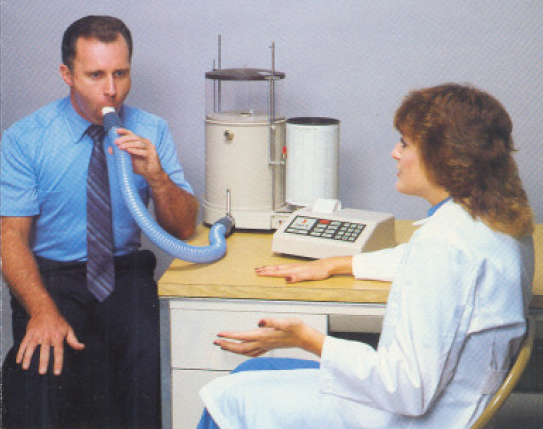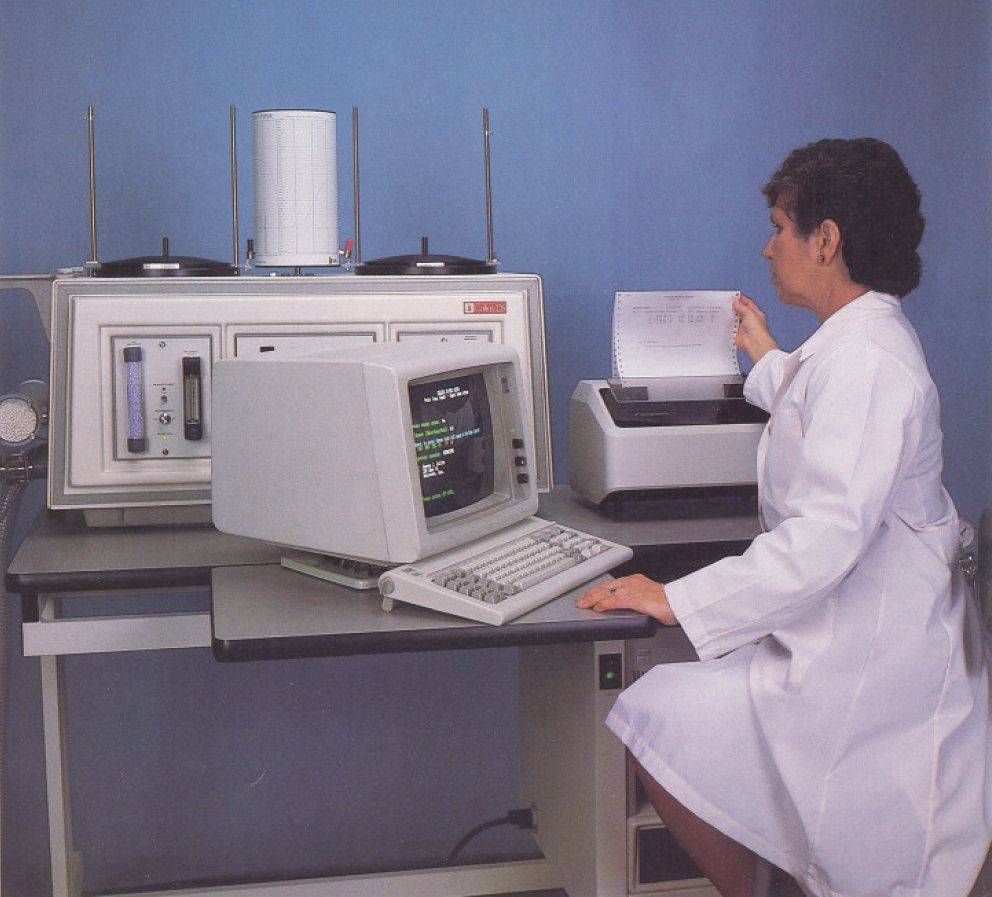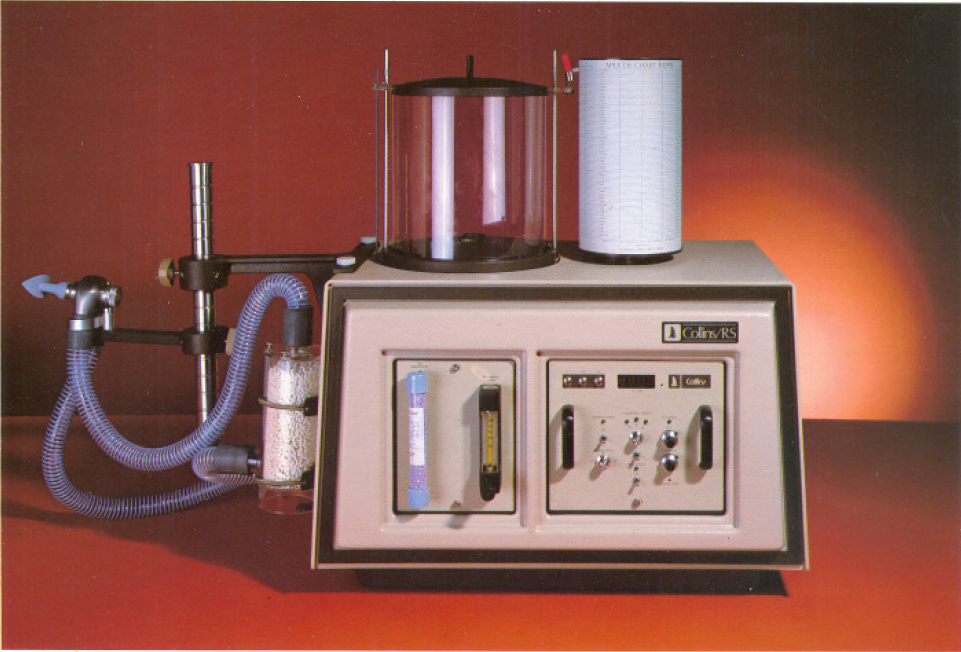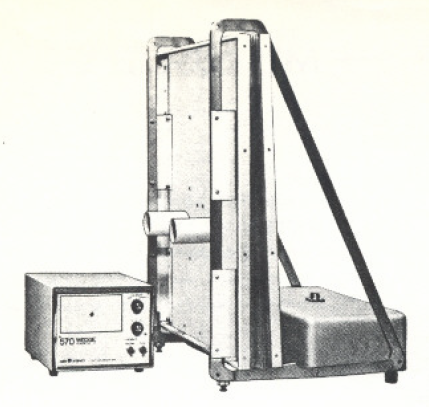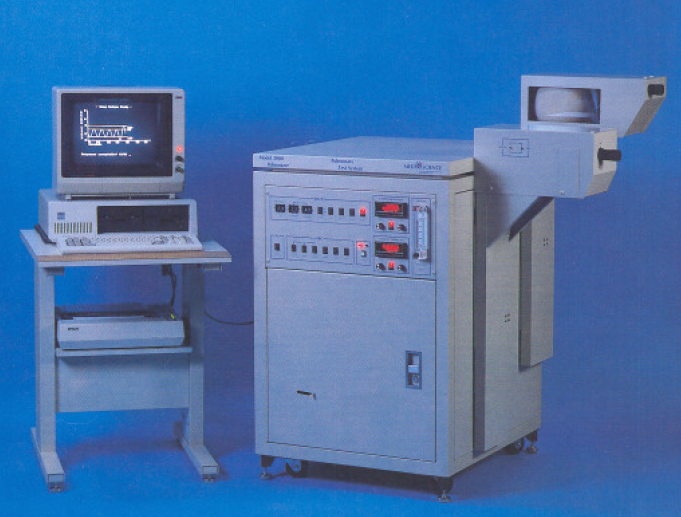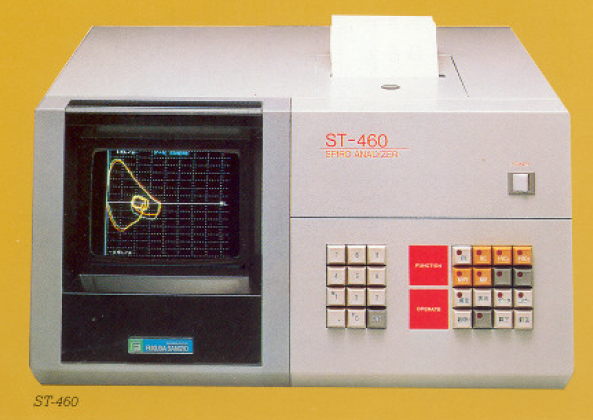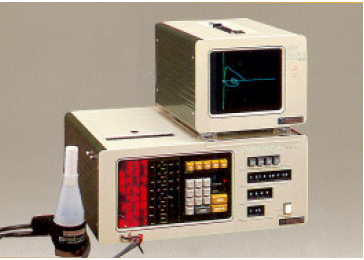Photo is from a sales brochure courtesy of James Sullivan, BA, RPFT, Supervisor, Pulmonary Laboratories, Memorial Sloan Kettering Cancer Center.
Category Archives: 1980s
Collins DS Plus, circa 1985
Collins RS, circa 1983
The Collins RS was capable of performing spirometry and helium dilution lung volumes. It came with an IBM PC (128K RAM, dual 320K floppy disk drives), Apple II (64K RAM, dual 5-1/4″ floppy drives) or a dedicated microprocessor controller/calculator (comprehensive keyboard, 40 character line printer, 25K ROM). Photo is from a sales brochure courtesy of James Sullivan, BA, RPFT, Supervisor, Pulmonary Laboratories, Memorial Sloan Kettering Cancer Center.
Med-Science Pulmonizer Pulmonary Function Testing System, 1980
Spirometer, Med-Science Model 570 Wedge, 1980
Med-Science Series 3000 Pulmonary Function Testing System, 1984
Performed spirometry, helium dilution lung volumes and single-breath DLCO. Could be upgraded to include closing volumes and N2 washout kung volumes. Used a wedge spirometer. Came equipped with a top-of-the line IBM PC XT with dual 5-1/4″ floppy disk drives (!). Photo is from a sales brochure courtesy of James Sullivan, BA, RPFT, Supervisor, Pulmonary Laboratories, Memorial Sloan Kettering Cancer Center.
Spirometer, Fukuda Sangyo Spiro Analyzer ST-100 & ST-200, 1984
Photo is from a sales brochure courtesy of James Sullivan, BA, RPFT, Supervisor, Pulmonary Laboratories, Memorial Sloan Kettering Cancer Center.
“The most perfect spirometers for practitioners. Two models are different in the test items covered. Either model displays the respiratory waveforms and test results on the screen on an LCD (liquid crystal display). Records can be printed on ordinary paper by a dot impact printer. Being small and light, it can be put in a special case for carrying it with you everywhere.”
Spirometer, Fukuda Sangyo Spiro Analyzer ST-460, 1984
Photo is from a sales brochure courtesy of James Sullivan, BA, RPFT, Supervisor, Pulmonary Laboratories, Memorial Sloan Kettering Cancer Center.
“A new model containing an 8-inch color CRT. Both test results and waveforms are displayed on the CRT screen. If measurement is made two times to obtain the best result, the respective respiratory waveforms can be displayed simultaneously in different colors for convenience of selection. The respiratory waveforms obtained before and after medication can be compared on one screen, and the rates of change in test results can be displayed. Records are printed by a silent thermal printer. The analyzer can be modified to be connected with a general purpose computer, for transfer of data.”
Spirometer, Fukuda Sangyo Spiro Analyzer CSA-800, 1984
Photo is from a sales brochure courtesy of James Sullivan, BA, RPFT, Supervisor, Pulmonary Laboratories, Memorial Sloan Kettering Cancer Center.
“The instrument proper is separate from the CRT for monitoring waveforms. Test results are displayed on an LED (light-emitting diode) display of the instrument, while the respiratory waveforms are displayed on the screen of a 9-inch CRT. Records are printed by an electrosensitive printer.”
“
Spirometer, Fukuda Sangyo Spiro Analyzer CSA-1600S, 1984
Photo is from a sales brochure courtesy of James Sullivan, BA, RPFT, Supervisor, Pulmonary Laboratories, Memorial Sloan Kettering Cancer Center.
“A 9-inch color CRT is contained. Both test results and waveforms are displayed on the CRT screen. If measurement is made three times to obtain the best result, the respective respiratory waveforms can be displayed simultaneously in different colors for the convenience of selection. Records are printed by a silent thermal printer. This model can be conbnected with FNV-600N (OPTION), to allow the closing volume, N2 wash out and FRC to be measured on the nitrogen open circuit method. Furthermore, this analyzer can be modified to be connected with a general purpose computer, for transfer of test data. A special table is available on request.”
